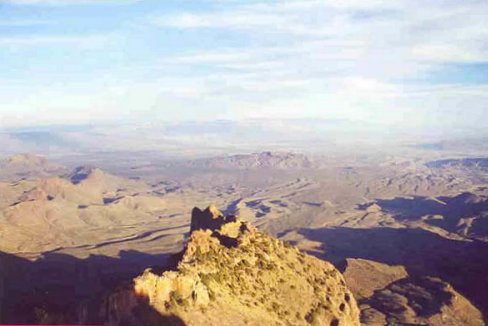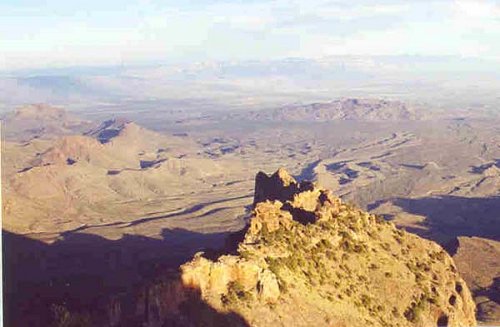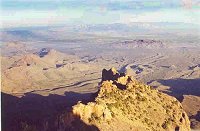The photographs and the analysis given are selected from students contributions (with the photographers permission naturally).
| The Big Bend, Texas ©Linda Mihalick |
 |
Landscape photography is a very popular photographic subject. Many can be forgiven for believing that landscape photography is easy, it is all around us and just sitting there. True it may not be hard to take a good landscape photo; to take a BRILLIANT one though takes planning, dedication and patience.
Our image under the microscope this month was taken in Big Bend Texas by one of our Landscape Photography students, Linda Mihalick. Linda sent this image to us expressing disappointment at the bulk of the shots she took. “We just returned from Big Bend, Texas. With gorgeous landscapes everywhere we looked. As I look over my photos, there are very few of which I am proud.”
This is the feeling every photographer goes through at one point or another, and often repeatedly! Photography is like any other activity, it takes dedication and practice to master and perfect. The real trick to success is to learn by your mistakes and try again. For example, many dedicated landscape photographers will keep returning to the same location until they come away with the image they envisaged.
Technical Quality
The image Linda submitted to us is a very nice one. There are ways, that it could be improved, which she had pointed out to us in her correspondence, but it is an image worth being “proud”.
Lets first of all look at this image’s good points. The most important thing is technical quality; sharpness and exposure. This is particularly important with landscape images because there is no excuse for fuzzy, murky images when it just sits there in front of you. This image is both well exposed and pin sharp. There is good detail in both the shadows and the sky.
The image was taken at about the right time of day. The long shadows have created texture and depth to the photo. If this were taken when the sun was high, the image would appear flat and probably uninteresting. Linda had not informed us of the time of day the shot was taken; we assume it was in the evening because of the distant haze. Although the evening is a good time to take landscape images, early morning is often better as the air is usually clearer. Haze is not necessarily a bad thing though; in this case it has given the image a sense of vastness, making the distance seem further away.
Improvements
The photo could be improved in two ways. One is to improve sky detail even further. This can be achieved by using a graduated filter, a polarizer filter or both.

The graduated filter would bring down the brightness of the sky, enriching color and detail and reducing contrast between foreground and sky. A polarizer filter would reduce glare and enrich the blue sky, enhancing cloud detail.
The second improvement could be made by not trying to get so much into the image. When faced with a view like this it is hard to refrain from trying to get it all:

Study the view carefully and try to figure out what really makes it. Find a center of interest and build around it. Here we have cropped the image to show that it has not lost any of its charm by excluding a certain portion of it.
Linda is on the right track with this image. It shows that she definitely has the eye for landscape photography. Our advice is to go back and try again and if need be…again and don’t be surprised if you have to go back…again!
